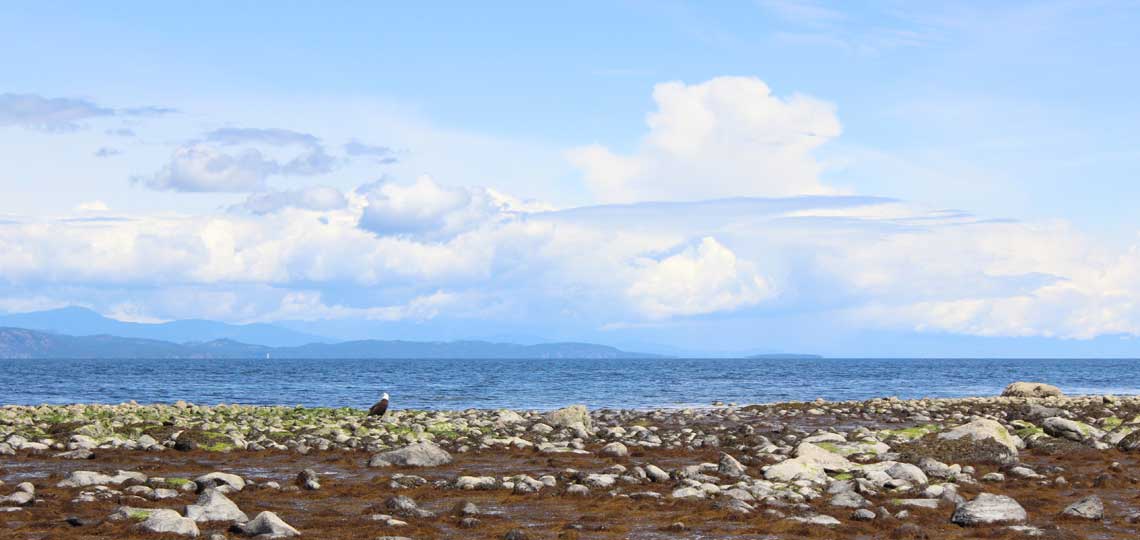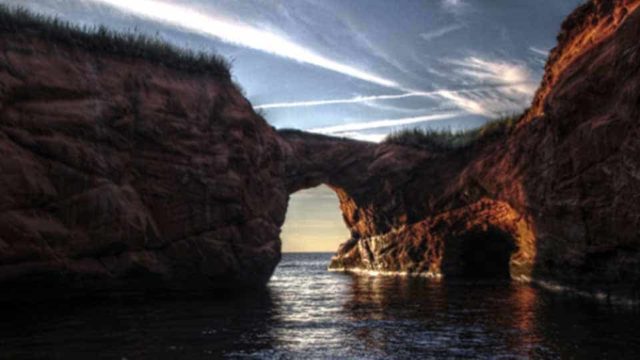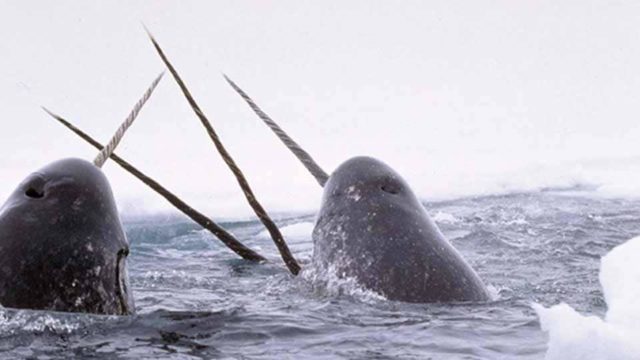On October 28, a vessel named the Polar Prince pulled into Victoria, B.C., and ended a 150-day-long tour from Canadian “coast to coast to coast.”
The “Canada C3” expedition left from Toronto on June 1, travelling 12,000 nautical miles in the Atlantic, Arctic and Pacific oceans as part of the country’s 150th anniversary celebrations. Along the way, it passed through six ecozones, and passengers and crew witnessed some incredible biodiversity, including whales cresting in the Pacific, seabirds bobbing in the Arctic, and polar bears and arctic wolves along the shorelines.
Minister of Environment and Climate Change Catherine McKenna was in British Columbia to greet the ship at the end of the expedition, and to make an announcement: Canada has reached its goal of protecting five per cent of its marine and coastal areas by 2017, she said, safeguarding marine ecosystems like the ones through which the Polar Prince travelled.
While this is a step forward, there is more work to be done if the government is to live up to the next phase of its commitment — securing protection for 10 per cent of Canada’s marine and coastal areas by 2020.
Fixing holes in existing marine protection legislation
As part of its plan to meet its marine protection targets, the federal government introduced Bill C-55 in June 2017. The bill, which recently passed second reading and has been referred to the Standing Committee on Fisheries and Oceans, proposes changes to the Oceans Act designed to speed up and strengthen the protection of marine areas.
Right now, the Oceans Act empowers the Minister of Fisheries and Oceans to designate Marine Protected Areas, or MPAs. But the act suffers from several gaps:
- The process to formally designate an MPA is complex and can take up to 10 years. During that time, potentially harmful activities can continue unchecked, threatening the very area to be protected.
- Even once the Minister formally designates an MPA, the Oceans Act does not guarantee a minimum level of protection for the area, raising questions about whether these areas should count towards meeting the government’s targets.
For example, the government has proposed allowing oil and gas activities in the Laurentian Channel, despite the fact that this submarine valley is also a proposed MPA.
The channel covers important habitat for many marine species, including species at risk like the leatherback sea turtle, and is a critical migration route for marine mammals moving in and out of the Gulf of St Lawrence. - Astonishingly, because of the Oceans Act’s limited offence provisions, it is not always an offence to carry on a prohibited activity within an MPA.
Bill C-55 makes important progress towards filling some of these gaps. For example:
- The Minister of Fisheries and Oceans will gain the power to designate “interim” MPAs. Now, instead of waiting seven to 10 years to formally protect an area, the Minister can provide the area with some level of protection once the formal designation process is started.
- Bill C-55 will prevent the Minister and Cabinet from using lack of scientific certainty about an activity’s risks as an excuse for delaying taking steps to designate a permanent or interim MPA.
- Enforcement officials, which can include Indigenous or environmental organizations designated by the Minister, will have broader inspection and enforcement powers, which in theory should allow them to better prevent non-compliance with the law and deal with non-compliance where it does happen.
- Importantly, a broader range of conduct will now count as an offence, including engaging in a prohibited activity within any MPA.
Bill C-55 also proposes changes to the Canada Petroleum Resources Act. These changes would clarify that Cabinet can prohibit oil and gas activities in an interim MPA (something they can arguably do already).
The Minister of Crown-Indigenous Relations and Northern Affairs and the Minister of Natural Resources, who are responsible for offshore oil and gas rights in Canada’s north, would also gain the power to cancel oil and gas rights in an MPA or an area that may be designated as an MPA and to compensate the owners of those rights for that cancellation. If this power is used appropriately, it could simplify and speed up the MPA designation process in the Arctic.
Bill C-55’s shortcomings
While it makes important improvements, Bill C-55 suffers from several shortcomings:
- In an attempt to “freeze the footprint” of existing and ongoing activities during designation of an MPA, these classes of activities will be permitted to continue by default. However, the ongoing activities exception is so broad that the actual footprint of ongoing activities could easily expand.
This is problematic in a number of ways:
First, activities that are approved, but are not actually happening, are still allowed to begin.
Second, the ongoing activities exception applies to classes of activities, rather than individually authorized activities. This means, for example, that if one oil and gas project is an ongoing activity, the area might be open for other new oil and gas projects of that kind.
Third, this exception does not account for the fact that existing activities may already be dangerously degrading the area; if the “footprint” is already more than the area can sustain, freezing it does not protect the area. The Minister has a limited power to ban ongoing activities that would otherwise be allowed, but this power only applies to certain types of activities. - The important changes to the Canada Petroleum Resources Act do not apply to Nova Scotia and Newfoundland and Labrador, where much of Canada’s offshore oil and gas activity is concentrated and the changes are thus most needed. Different statutes govern offshore oil and gas activity in these jurisdictions, and Bill C-55 misses an opportunity to make corresponding changes to those statutes.
- Bill C-55 also misses an important opportunity to recognize that Indigenous peoples must play a critical role in designating and managing MPAs.
Finally, Bill C-55 does nothing to incorporate minimum levels of protection into the Oceans Act.
The takeaway
The “Canada C3” voyage showcased the incredible diversity in Canada’s oceans and coastal areas. Now, we need to ensure that the government’s commitment to protecting these stunning places extends beyond the 150-day voyage.
Bill C-55, as drafted, will introduce some important positive changes to the Oceans Act. If enacted, these changes should advance the protection of marine areas. Can they be strengthened? Yes. Is more work needed? Yes.
In addition to fixing the gaps identified above, the government must not rely excessively on interim MPAs to meet its protected area targets. While interim MPAs can, if the ongoing activities exception is limited appropriately, provide important temporary protections, they are just that: temporary.
The fact that we have secured protection for five per cent of our marine and coastal areas is worth celebrating. Going forward, we need to be mindful of Bill C-55’s strengths and weaknesses if we want the government succeed in protecting double that by 2020.
From coast to coast to coast, the future of these marine ecosystems depends on it.





